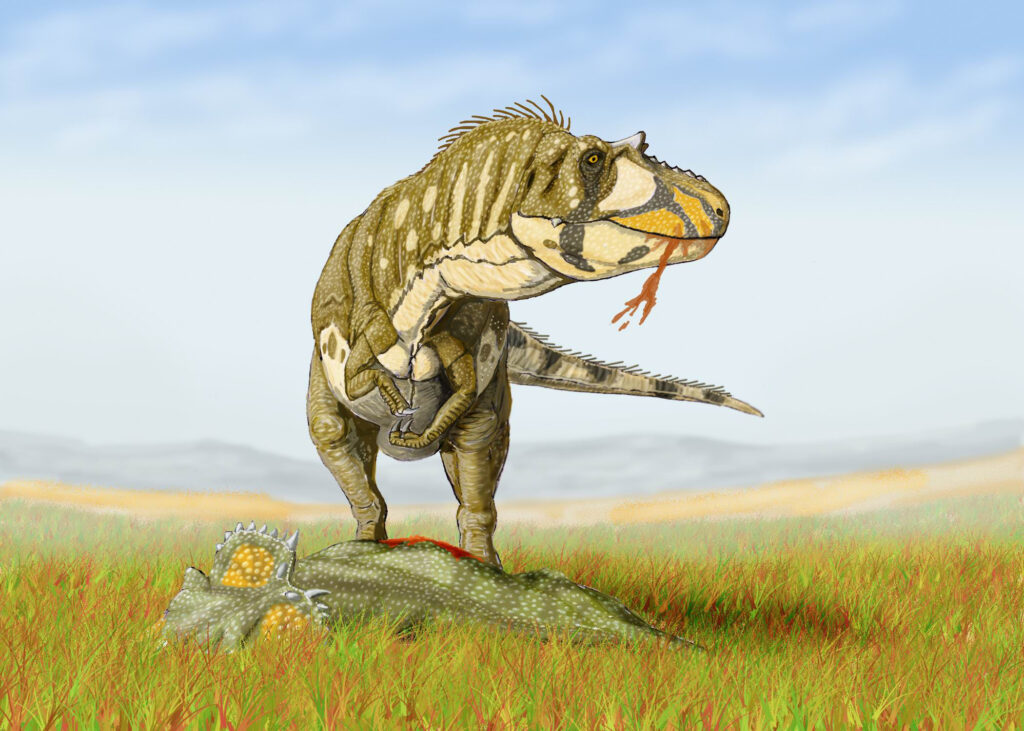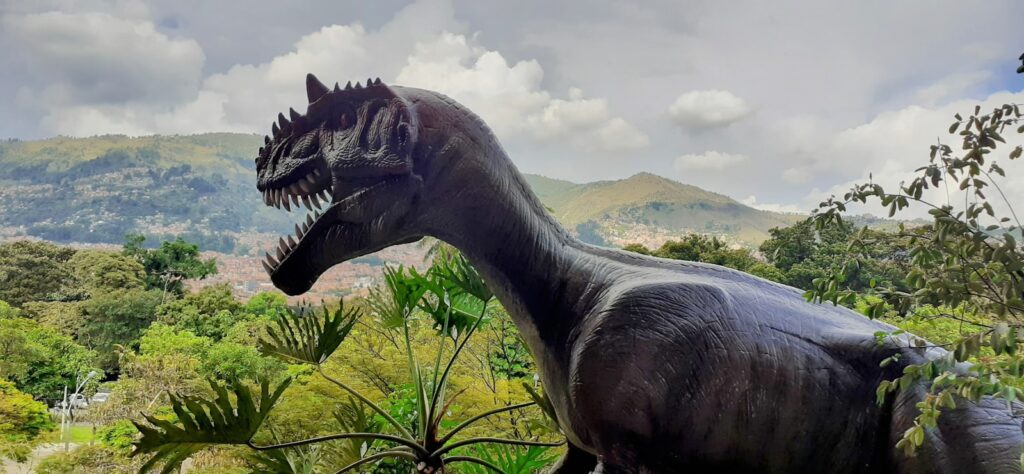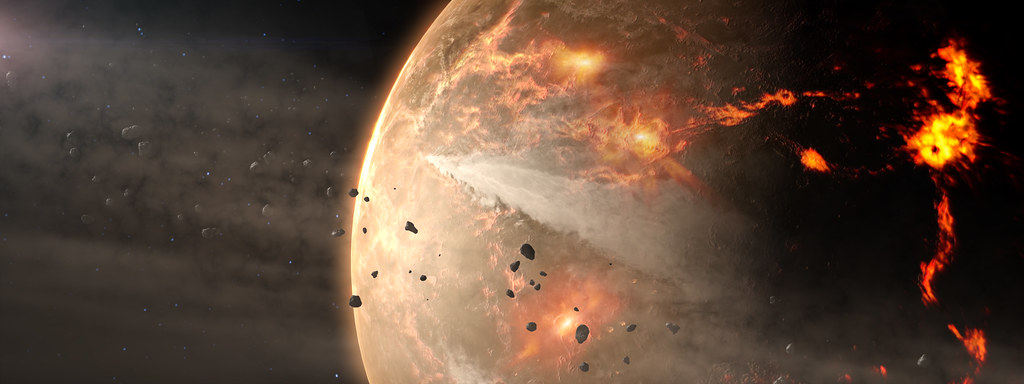The ancient world wasn’t just about massive vegetarians wandering through prehistoric landscapes. Long before lions perfected their hunting strategies or wolves developed their pack tactics, dinosaurs were already writing the playbook for predatory behavior. These remarkable creatures didn’t just survive for over 160 million years by accident – they evolved, adapted, and specialized their hunting techniques in ways that would make modern predators take notes.
The Humble Beginnings of Dinosaur Predation

Picture a world where Coelophysis was a primitive theropod dinosaur. Usually growing to length of about 3 metres (9.8 feet), it was very light, weighing only about 15–32 kg (33–71 pounds). These early hunters weren’t the terrifying beasts Hollywood loves to portray, but rather slender, agile creatures that resembled oversized ground birds more than movie monsters. Early meat-eating dinosaurs like Coelophysis relied on their speed and agility to catch a variety of animals like insects and small reptiles. The sharp teeth and grasping claws of Coelophysis would have helped them to hold and kill their food.
What made these primitive predators successful wasn’t brute force, but opportunism. Fossil evidence suggests that Coelophysis primarily fed on small reptiles, fish, and amphibians, likely using its speed to hunt. They were the ultimate generalists, taking whatever meals came their way in the challenging Late Triassic world.
From Simple Scavengers to Active Hunters

The transition from opportunistic feeding to active hunting marked a crucial evolutionary milestone. The teeth of Coelophysis were typical of predatory dinosaurs, as they were blade-like, recurved, sharp, jagged, and finely serrated on both the anterior and posterior edges. Its dentition shows that it was carnivorous, probably preying on the small, lizard-like animals that were discovered with it. It may also have hunted in packs to tackle larger prey. However, recent analysis suggests that the arm of Coelophysis was flexible and had a good range of motion, but its bone structure suggested that it was comparatively weak. The “weak” arms and small teeth in this genus suggested that Coelophysis preyed upon animals that were substantially smaller than itself.
Early theropods developed their hunting strategies through necessity rather than choice. Some paleontologists have suggested that Coelophysis gathered in groups, which may have permitted the species to prey on larger herbivores by hunting cooperatively. Alternatively, Coelophysis may have gathered into chaotic groupings around potential food sources, similar to the behavior of modern crocodiles and vultures on the African savannahs. This represents the first glimpse of social behavior that would later evolve into more sophisticated hunting strategies.
The Rise of Anatomical Specialization
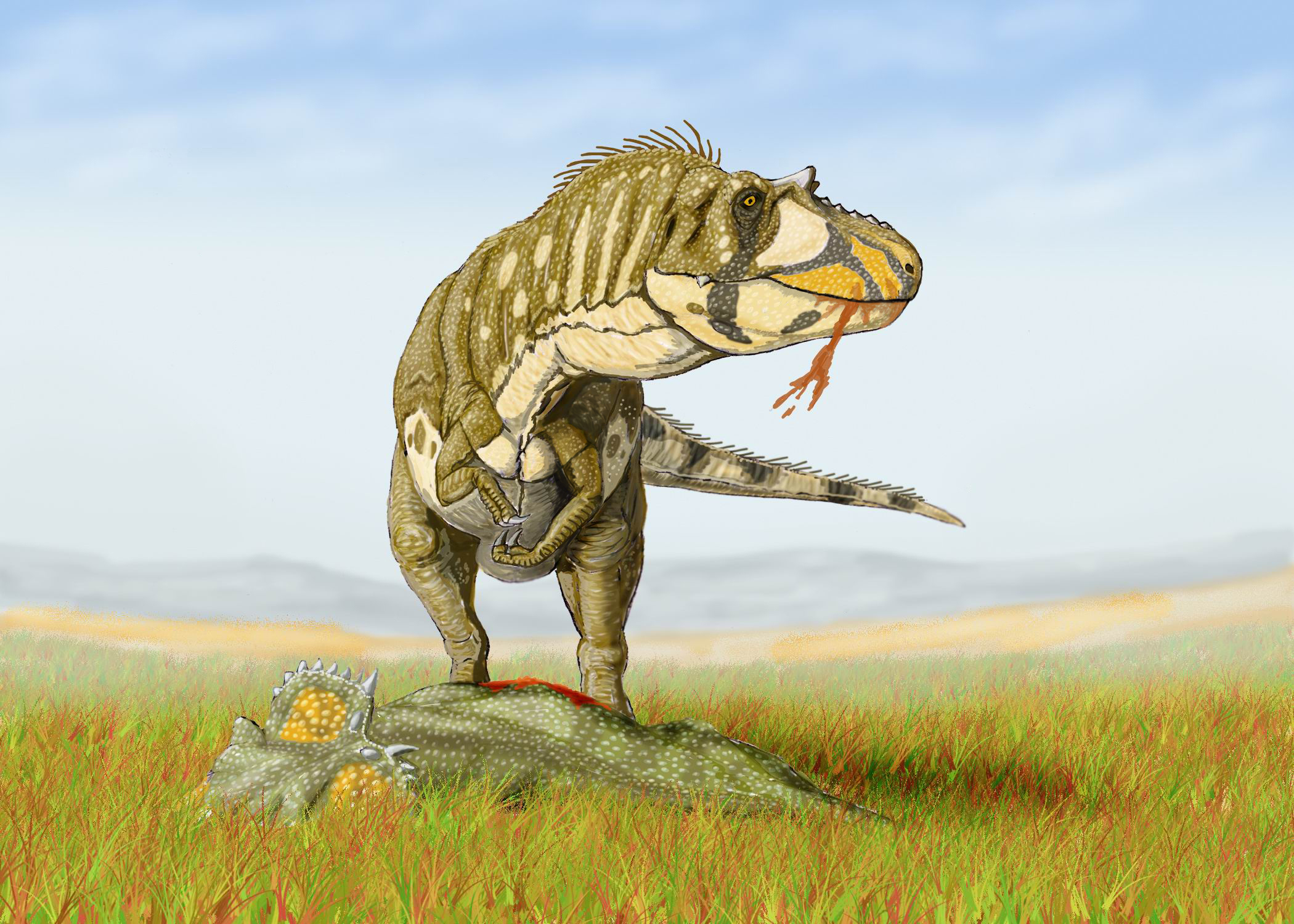
As dinosaur evolution progressed, predators began developing specialized tools for different hunting roles. Predatory dinosaurs possessed specialized anatomical features for capturing and consuming prey. Their teeth and jaws were adapted for a carnivorous diet. Many theropods, like Tyrannosaurus rex and Allosaurus, had deeply serrated, backward-curving ziphodont teeth, allowing them to efficiently slice through flesh and bone. This wasn’t just random evolution – it was targeted specialization that would define entire predator lineages.
Different hunting niches demanded different anatomical solutions. Dromaeosaurids, are often referred to as “raptors.” Dinosaurs like Velociraptor and Deinonychus were considerably smaller and more agile than tyrannosaurs. Fossils from the Cretaceous period show they were lightweight and built for speed, and a key feature was a large, sickle-shaped claw on each foot. These predators represented a completely different hunting philosophy compared to their massive contemporaries.
The development of sensory adaptations accompanied physical specialization. Beyond physical weaponry, keen senses and impressive speed were key advantages. Many carnivorous dinosaurs had forward-facing eyes, providing binocular vision and excellent depth perception for judging prey distances. A highly developed sense of smell, indicated by large olfactory bulbs, allowed predators like T. rex to track prey or detect carcasses over long distances.
The Great Debate: Predator or Scavenger
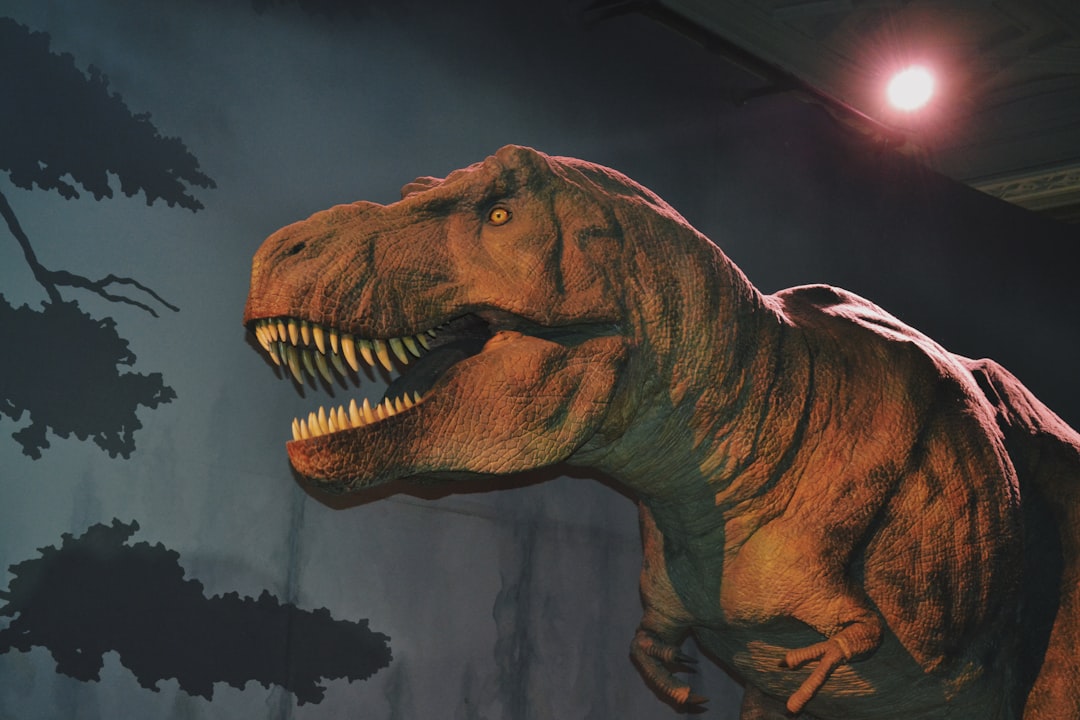
One of paleontology’s most heated debates centers on whether large theropods like Tyrannosaurus rex were active hunters or primarily scavengers. The most logical answer may be that Tyrannosaurus rex, like many large predators, was an opportunist, catching fresh meat when possible and eating carrion when necessary. Modern research suggests this wasn’t an either-or situation but rather an evolutionary strategy that maximized survival opportunities.
The evidence for T. rex as an active predator has grown stronger over recent years. When examining the skeletons of dinosaurs living at the same time as T. rex, there are more and more cases where T. rex bite marks are being found. These did not always result in the death of the animal, as many of the fossil specimens show regrowth of bone at the site of the wound. In addition to bite marks, T. rex teeth have also been found embedded in the bones of their prey.
What’s particularly fascinating is how a census study of the Hell Creek Formation published by John Horner, Mark B. Goodwin and Nathan Myhrvold in 2011 found that because of their relative abundance, tyrannosaurs were more like hyenas: opportunistic feeders that dined on more than just live prey and a specific group of dinosaurs. Riley Black, however, held that this research did not overturn Tyrannosaurus’s image as a predator, noting that research has found that spotted hyenas obtained a majority of their food from hunting; scavenging as little as 5% in some locations.
Age-Based Hunting Strategies
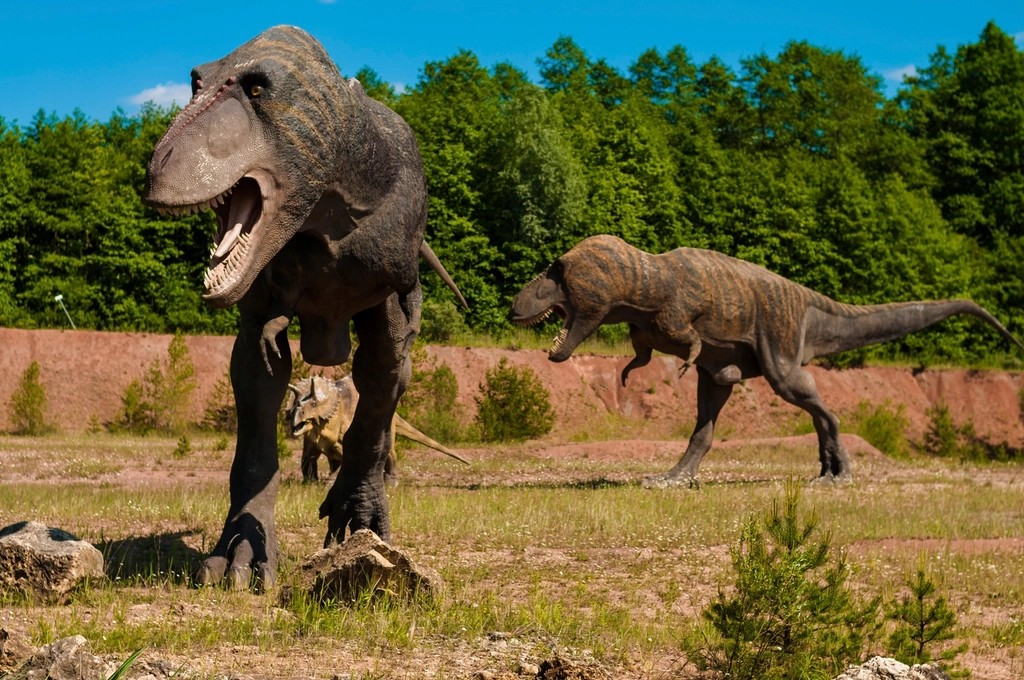
Recent discoveries have revealed that dinosaur hunting strategies often changed dramatically as individuals matured. From an ecological perspective, the differences in body proportions are likely associated with different behaviors. Whereas an adult T. rex would have been the largest predator around and could rely on its huge crushing jaws to subdue its prey, juveniles would not have been able to hunt in this way because of their smaller size. Instead, juvenile T. rex likely used their arms for grappling to help them capture prey.
This age-based specialization represents a sophisticated evolutionary strategy that allowed different life stages to exploit different ecological niches. As with other carnivorous dinosaurs and modern carnivores in general, Tyrannosaurus probably preferred to target small prey animals, including juveniles of larger dinosaur species. A 2010 analysis by Hone & Rauhut suggested that this may partially explain the general lack of small and juvenile dinosaur skeletons in the fossil record. Tyrannosaurids like Tyrannosaurus appear to have been specialized to crush and likely ingest the bones of their prey, and predation of juvenile dinosaurs would therefore have left fewer skeletons to fossilize.
Specialized Aquatic Hunters
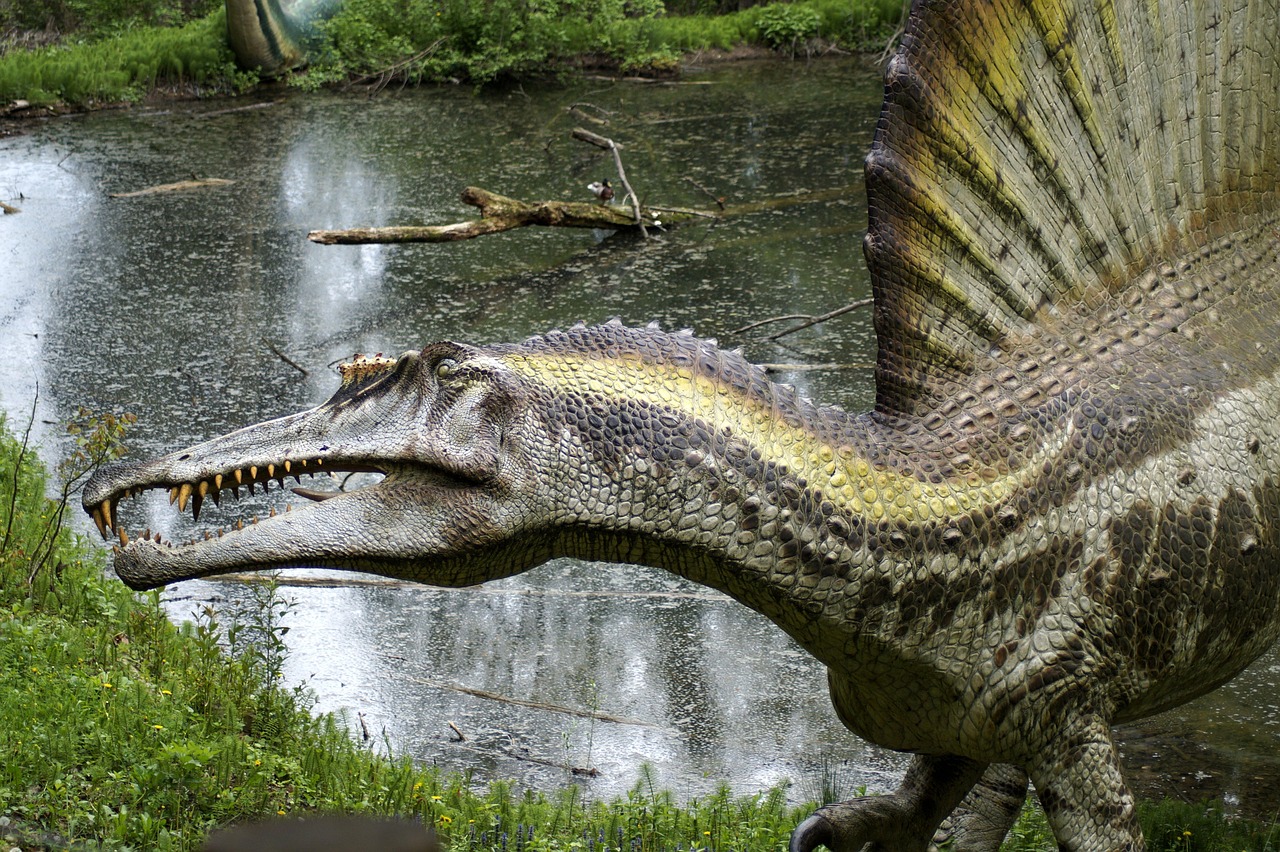
Not all dinosaur predators stuck to terrestrial hunting grounds. A particularly unique group of carnivores were the Spinosaurids, which thrived during the Cretaceous period. The most famous member, Spinosaurus, stands out for its specialized adaptations to a semi-aquatic lifestyle. These fishing dinosaurs developed entirely different hunting strategies compared to their land-based relatives.
The diet of carnivorous dinosaurs was not limited to other dinosaurs. The unique anatomy of Spinosaurus, with its conical teeth and elongated snout, points to a primarily piscivorous, or fish-eating, diet. This specialization allowed them to exploit an ecological niche that few other dinosaurs could access, demonstrating the remarkable diversity of predatory strategies that evolved during the Mesozoic Era.
The hunting behavior of these aquatic specialists closely paralleled modern crocodilians. Spinosaurus hunting strategy was remarkably similar to modern crocodiles. They would wait patiently in rivers and lakes, using their excellent underwater vision to spot fish and other aquatic prey. Their elongated snouts were filled with cone-shaped teeth perfect for gripping slippery fish, while their powerful forelimbs could sweep through the water with surprising speed.
The Pack Hunting Controversy
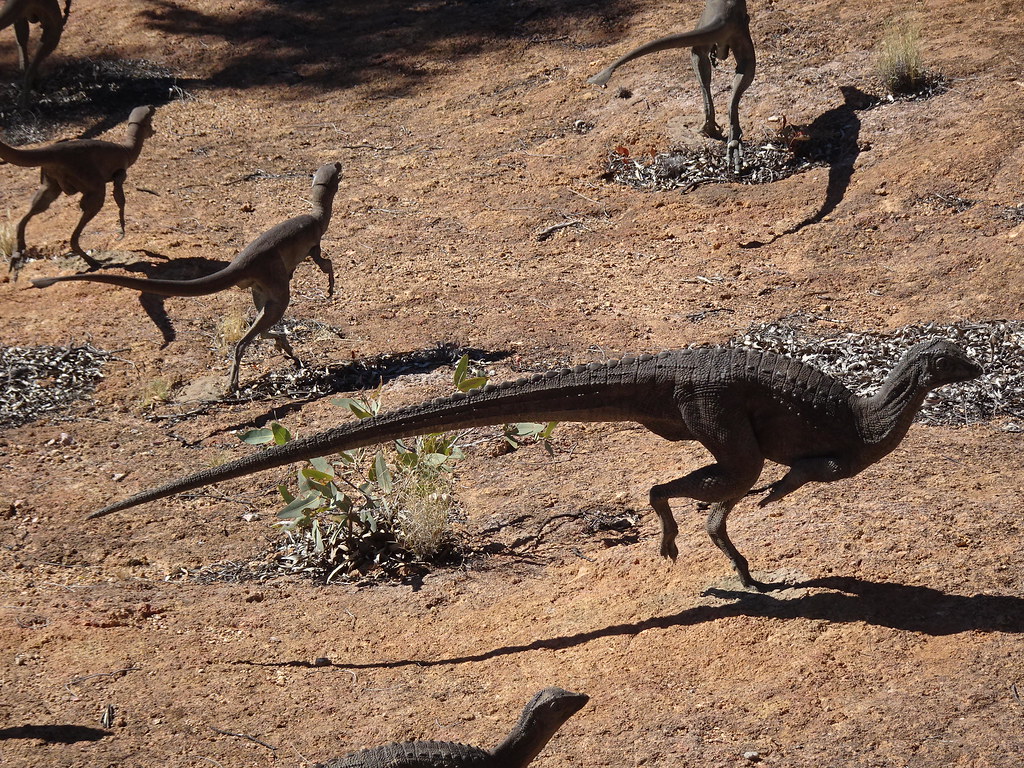
Few topics in paleontology generate as much debate as whether dinosaurs hunted in coordinated packs. The image of the highly intelligent, pack-hunting raptor has become engrained in scientific literature and popular works alike. First proposed to explain the relatively common co-occurrence of large herbivorous dinosaurs and much smaller Deinonychus antirrhopus from the Cretaceous of North America, a wolf-like social hunting structure has become the standard depiction of raptors in popular works over the last three decades.
However, recent evidence challenges this romanticized view. The paleontologists found that Cretaceous crocodilians, like modern species, show a difference in diet between the smallest and largest teeth, indicating a distinct transition in diet as they grew. “This is what we would expect for an animal where the parents do not provide food for their young,” Dr. Frederickson said. “We also see the same pattern in the raptors, where the smallest teeth and the large teeth do not have the same average carbon isotope values, indicating they were eating different foods.
The evidence suggests that Modern diapsids, including birds and crocodiles (the closest relatives of dromaeosaurids), display minimal long-term cooperative hunting (except the aplomado falcon and Harris’s hawk); instead, they are usually solitary hunters, either joining forces time to time to increase hunting success (as crocodilians sometimes do), or are drawn to previously killed carcasses, where conflict often occurs between individuals of the same species. For example, in situations where groups of Komodo dragons are eating together, the largest individuals eat first and might attack smaller Komodo dragons that attempt to feed; if the smaller animal dies, it is usually cannibalized. When this information is applied to the sites containing putative pack-hunting behavior in dromaeosaurids, it appears somewhat consistent with a Komodo dragon-like feeding strategy.
Speed and Agility Specialists
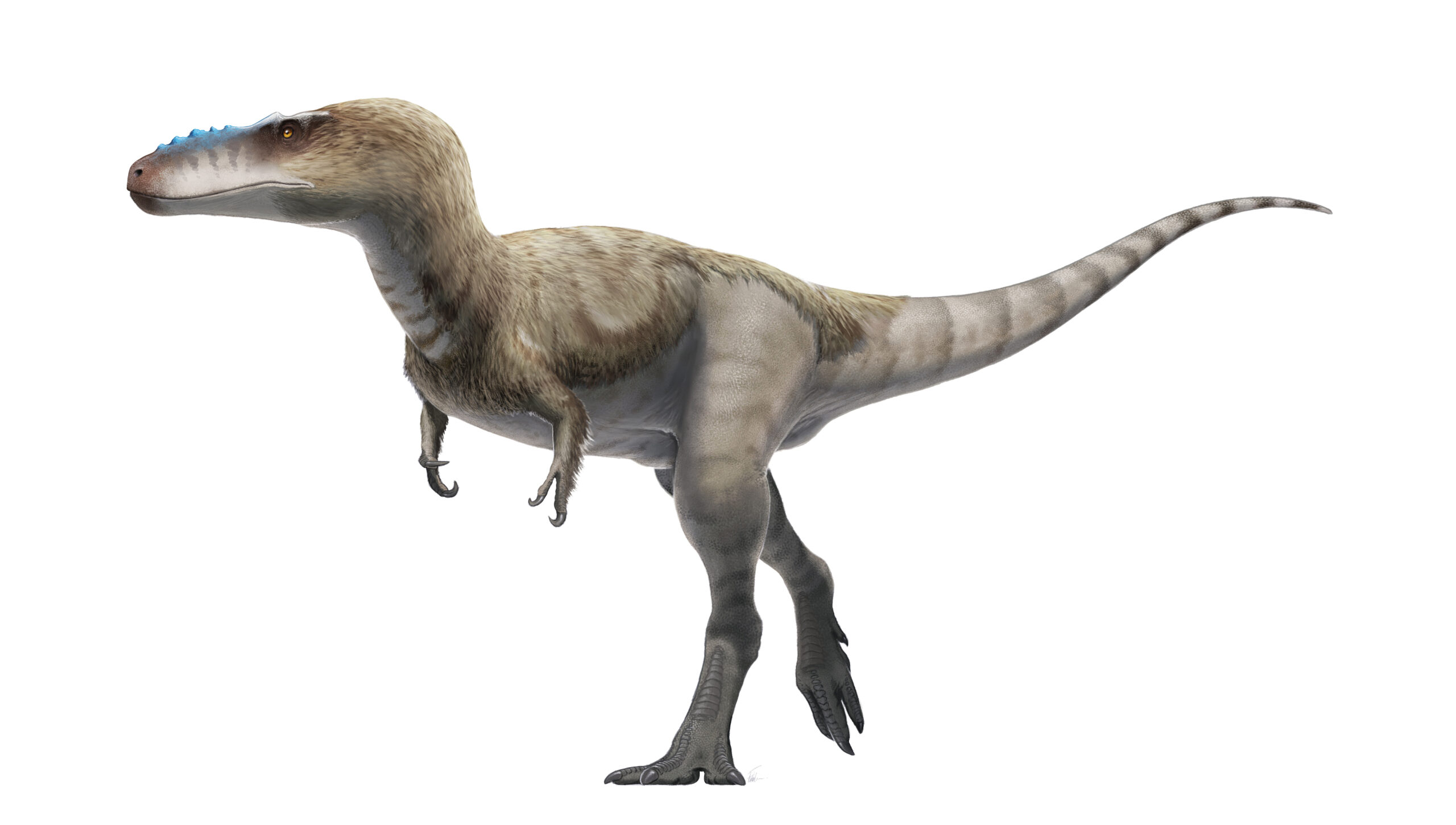
Some dinosaur predators evolved to become the ultimate pursuit hunters. Speed and agility were fundamental for many theropods, whose bipedal stance was a significant advantage. Powerful hind limbs with well-developed musculature allowed for rapid acceleration and sustained speed. The hollow bones found in many theropod species reduced their overall weight, contributing to their quickness and maneuverability. These adaptations created predators that could chase down prey across vast distances.
The development of lightweight construction wasn’t just about speed – it represented a fundamental shift in predatory strategy. Coelophysis means ‘hollow form’ and this comes from the hollow limb bones. This feature was shared by many other dinosaurs, and would have given Coelophysis a lightly-built body, helping it to be a swift, agile hunter. This engineering solution would influence predator design for millions of years.
Different theropod lineages developed their own approaches to speed-based hunting. However, the tyrannosaur Alioramus altai, from Mongolia, had a body unlike other members of the family. It had a long thin head, weak jaw, and slender light-weight body, These features are far more suitable for hunting smaller prey and using speed instead of brute strength.
Aerial Predators Take Flight
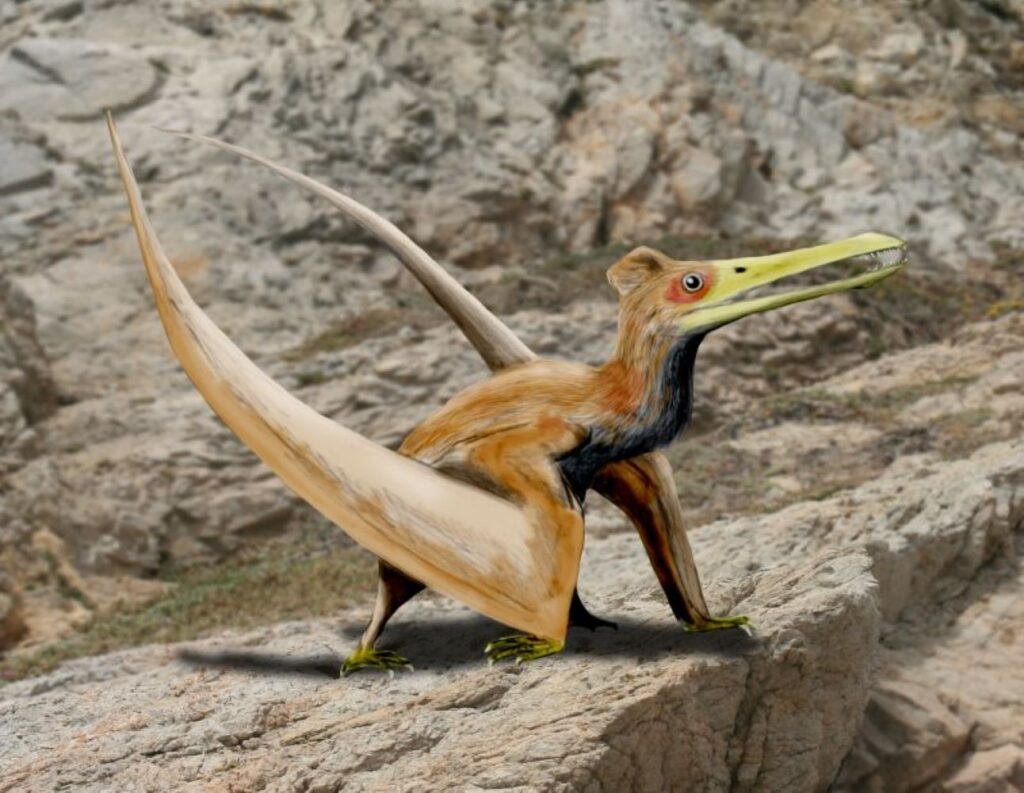
The evolution of flight opened entirely new hunting opportunities that had never existed before in terrestrial ecosystems. The discovery that many theropod dinosaurs possessed feathers revolutionized our understanding of dinosaur hunting strategies. Predators like Microraptor didn’t just hunt on the ground – they took to the trees and skies, opening up entirely new hunting opportunities that had never existed before. These early flying hunters were like prehistoric hawks, using their aerial abilities to spot prey from above and launch surprise attacks from angles that ground-based prey couldn’t anticipate.
Feathered predators gained tactical advantages that ground-based hunters couldn’t match. Their feathers weren’t just for flight – they also provided camouflage, helping these predators blend into their forest environments. The transition from ground-based to aerial hunting marked another major evolutionary leap. Suddenly, no prey was safe, whether it was hiding in dense undergrowth or perched high in the treetops. This three-dimensional hunting approach gave feathered predators a significant advantage over their earth-bound competitors.
Social Behaviors and Group Dynamics
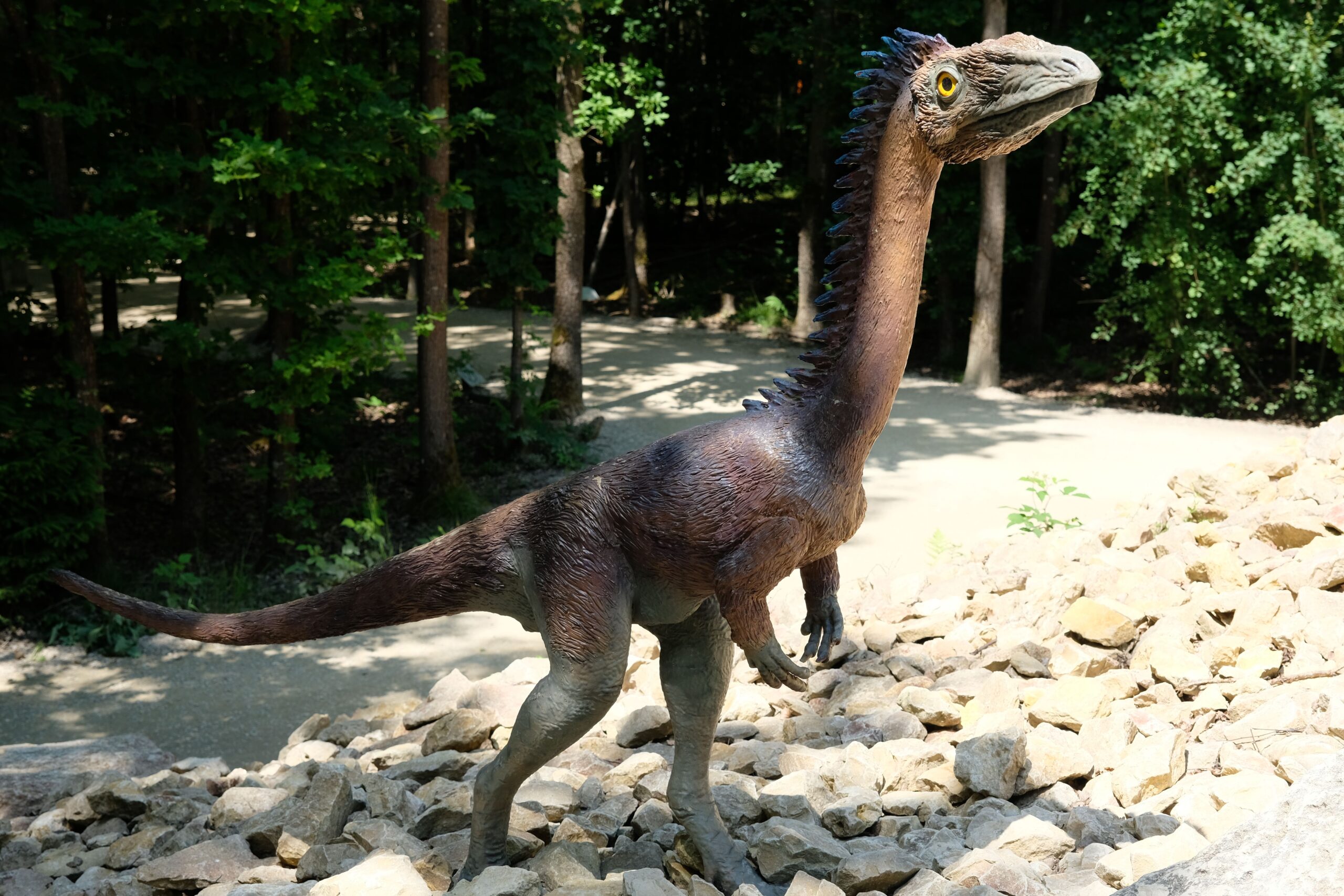
While true pack hunting remains controversial, evidence suggests that many dinosaur predators did engage in social behaviors that enhanced their hunting success. There is good evidence that many did form social groups. Plant-eaters would have found safety in numbers, while predators may have hunted in packs and benefited from co-operation. These social structures likely represented intermediate stages between solitary hunting and the complex cooperative strategies seen in modern pack hunters.
Some dinosaur species showed clear evidence of group living, even if true cooperative hunting remained limited. Coelophysis bauri was a small theropod with a slender, lightweight skeleton and very long tail, for speed and agility in attack. A mass burial of over a dozen of these dinosaurs suggests they may have lived in packs. However, living in groups doesn’t necessarily mean hunting cooperatively.
The reality of dinosaur social behavior probably fell somewhere between Hollywood fantasy and complete isolation. However, this idea has been questioned due to a lack of convincing fossil evidence and the rarity of true pack hunting in most animals. There is evidence from footprints and skeletal assemblages to support the idea that some dromaeosaurs lived and moved in groups, but whether they hunted in a coordinated fashion like wolves or lions isn’t clear.
Conclusion: The Legacy of Dinosaur Innovation
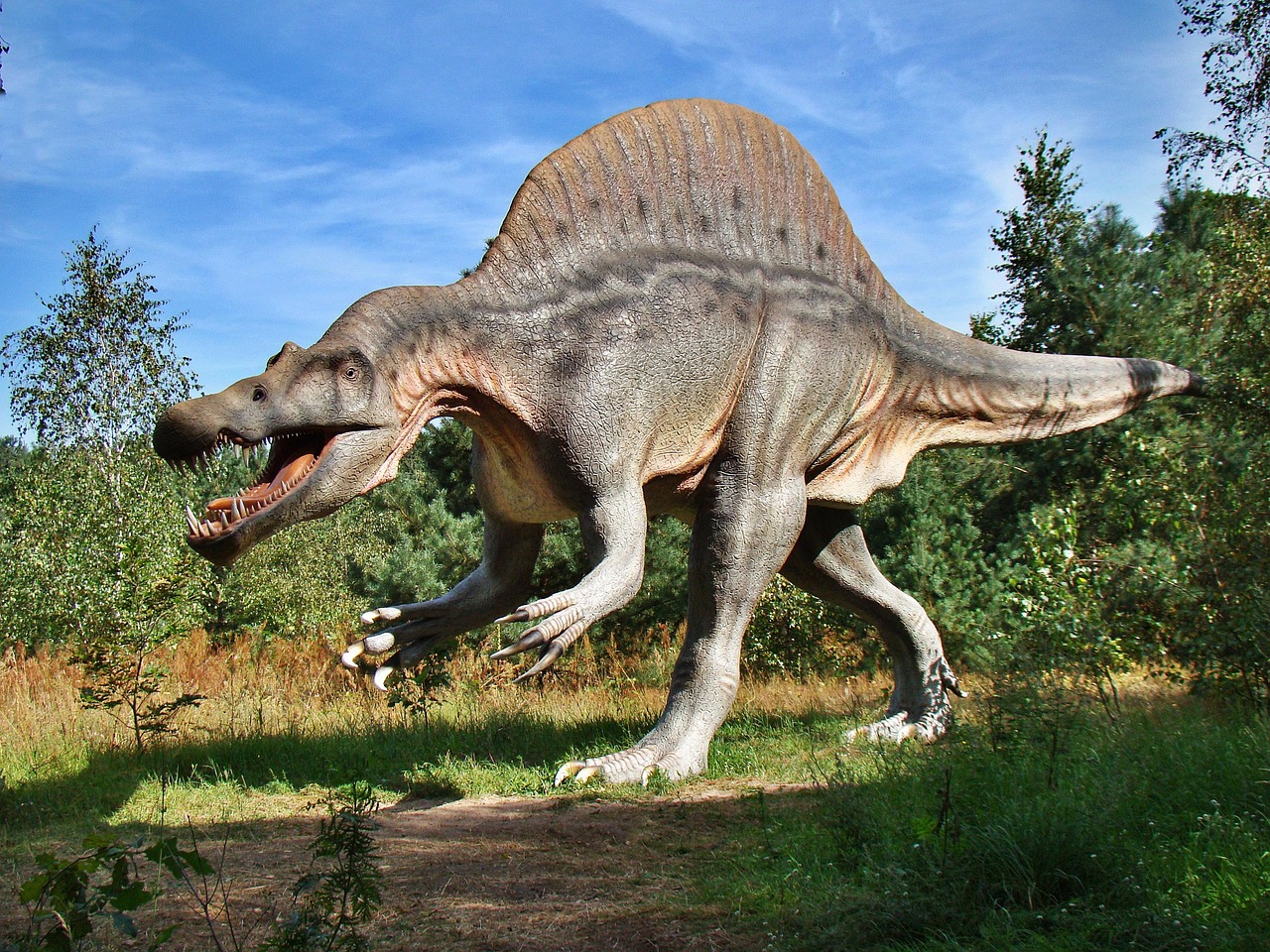
The evolution of dinosaur predatory behavior from simple opportunistic feeding to highly specialized hunting strategies represents one of nature’s most remarkable success stories. These ancient hunters didn’t just survive – they thrived for over 160 million years by developing techniques so effective that many continue to be used by modern predators today. From the speed-based pursuit hunting of early theropods to the aerial tactics of feathered predators, dinosaurs wrote the playbook for virtually every hunting strategy we see in nature.
What makes this evolutionary journey truly extraordinary is how dinosaurs managed to occupy virtually every predatory niche available on Earth, from tiny insect hunters to massive apex predators, from aquatic fishers to aerial assassins. Their success wasn’t just about size or strength – it was about adaptation, specialization, and the relentless drive to exploit every available opportunity for survival.
The next time you watch a nature documentary showing wolves coordinating an attack or a hawk diving on its prey, remember that you’re witnessing tactics that were perfected millions of years ago by creatures whose evolutionary wisdom continues to shape the natural world. Did you ever imagine that modern predators were still using dinosaur playbooks?

